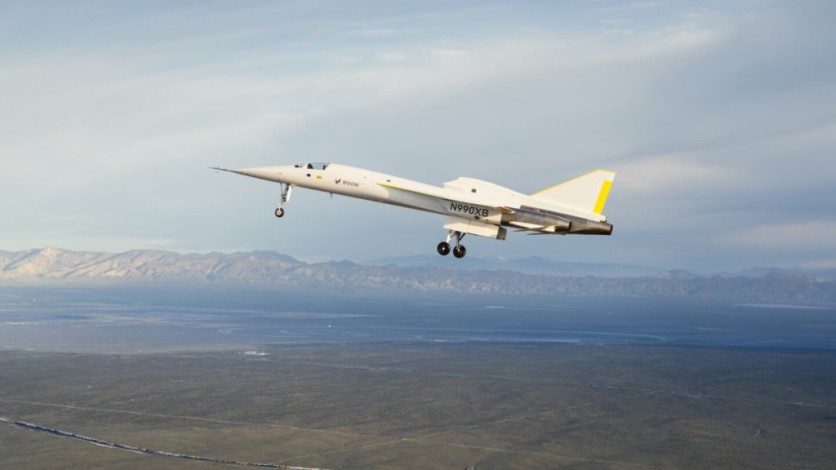American aviation company Boom Supersonic has recently achieved a major milestone as its XB-1 supersonic test jet received clearance from the Federal Aviation Administration (FAA) to soar beyond Mach 1 speeds, the company announced in a recent news release.
This groundbreaking development allows crucial tests to validate the jet's design in critical areas such as fuel efficiency, speed capabilities, and overall flight characteristics.
According to NASA, an airplane flying at Mach 1, or transonic speed, travels at the speed of sound. Speeds exceeding Mach 1 are considered supersonic, while anything below Mach 1 is considered subsonic.

Boom Supersonic has reached a significant milestone by obtaining approval from the Federal Aviation Administration (FAA) to fly faster than Mach 1.
Boom Supersonic's XB-1 Poised for Historic First Supersonic Flight
The approval closely follows XB-1's successful subsonic test flight, signaling a pivotal moment for supersonic aviation. Blake Scholl, the founder and CEO of Boom Supersonic, expressed excitement about the upcoming historic supersonic flight, stating, "Following XB-1's successful first flight, I'm looking forward to its historic first supersonic flight."
Before attempting to break the sound barrier, Boom plans to conduct 10-20 flights to assess the XB-1's performance and handling qualities meticulously. Each flight will systematically expand the aircraft's flight envelope, ensuring a thorough understanding of its capabilities.
In preparation for supersonic operations, XB-1's flight envelope will undergo rigorous testing, including evaluations of landing gear retraction and extension, angle of attack (AOA), sideslip, and stability augmentation systems.
Test pilot Tristan "Geppetto" Brandenberg elaborated on the upcoming tests, stating, "We anticipate taking it up to 16 degrees AOA, and will also evaluate the sideslip which will expand the envelope in order to give us a little bit more margin on a nominal landing."
"Right now, the plan is multiple supersonic flights. We plan to do Mach 1.1, 1.2, and 1.3 on the first three," the pilot said.
Read Also : Japan Launches $33 Billion Project for Next-Gen Hydrogen Passenger Jet to Lead Aircraft Manufacturing
Boom Advances in Supersonic Travel Despite Challenges
Despite encountering hurdles such as test plan delays and a split with the original engine manufacturer Rolls-Royce, Boom remains undeterred. Engadget tells us that the company has forged ahead with a custom "Symphony" jet engine developed in collaboration with FTT, demonstrating resilience in the face of challenges.
Excitement surrounding Boom's supersonic endeavors is palpable, with major airlines like American Airlines and United Airlines already placing orders for multiple jets. This underscores the industry's anticipation for a new era of high-speed air travel.
Boom's flight testing operations are strategically based at the Mojave Air & Space Port, adjacent to the R-2508 Complex, renowned for hosting pioneering aviation feats. The significance of XB-1's flights cannot be overstated, marking the return of civil supersonic aircraft to the skies two decades after Concorde's retirement.
Stay posted here at Tech Times.
Read also: Joby Aviation eVTOL: Production Prototype Flight Certification on the Way After Completing Tests

ⓒ 2025 TECHTIMES.com All rights reserved. Do not reproduce without permission.




